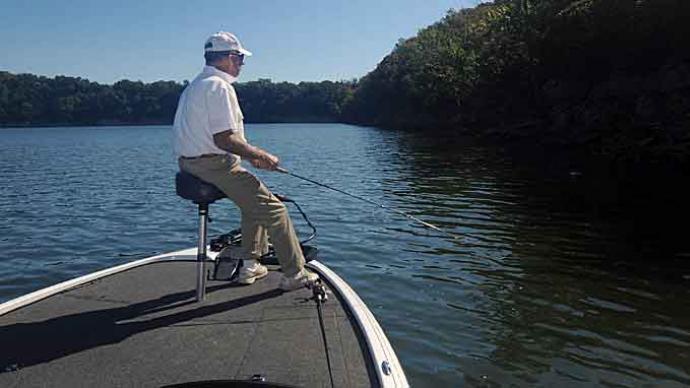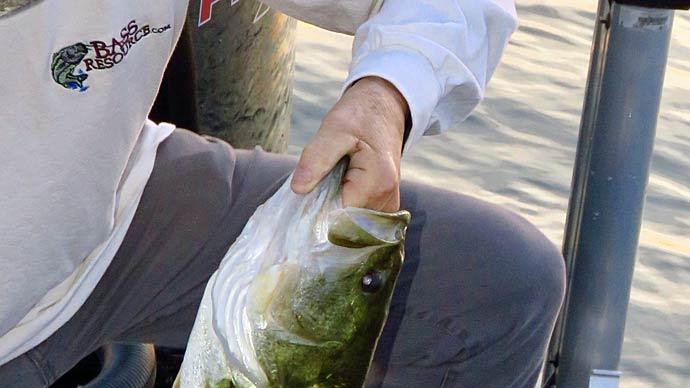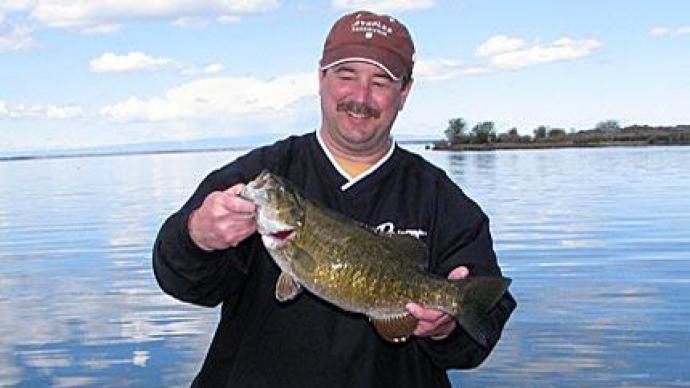
From personal experience, nothing is more exciting than witnessing a bass explode on a topwater bait, especially if it is a Zara Spook. Of course, I prefer my Spook being nailed by a bass.
Most anglers think it takes a lot of effort and learned skills to succeed with a Zara Spook. However, fishing this lure is much easier than people think. For the uninitiated, a Zara Spook is a plug shaped like a cigar with a line tie just under the nose of the bait. Early versions were made from wood, but the lure has since evolved into a complete line of plastic baits in different sizes and vibrant colors, with rattles and without rattles. You could fill a tackle box with all the different variations. I know because I have.
The bait has no inherent action of its own. The angler imparts the action, which is why many anglers have not added this excellent lure to their collection. However, this bait shines when it comes to calling up fish. No other bait I have fished can elicit strikes from fish 20 to 30 feet away. I have caught fish in 20 feet of water rise to strike one, and I have witnessed a fish chase one down from 10 yards away on more than one occasion. There’s just something about that side-to-side movement that bass find simply irresistible.
As with most artificial baits, there is more than one way to work it. This is where its versatility comes into play. Lucky for us, those are just variations of the basic retrieve. A Zara Spook is worked with the rod, not the reel, AND it’s worked with slack line. Those are the two factors most anglers have difficulty mastering. After a cast is made and before the bail is closed or the handle of your baitcaster is turned, raise your rod tip from 9 o’clock to around 10 o’clock. This will add the initial slack in your line necessary to start walking. Now, without reeling, drop your rod tip back to the 9 o’clock position and snap it back up to somewhere between 10 and 12 o’clock. The bait will dart to one side or the other. Now drop your rod tip, take up just a little slack with your reel, and repeat the same motion, and your bait will dart in the opposite direction. If it does not dart, you've taken in too much line. Continue dropping the rod, picking up some slack, and snapping the rod tip up, and you’ll be walking that dog like a pro in no time.
A variation to the standard walk-the-dog technique involves moving your rod to the side or down in the manner described above. You want to learn the walking technique because it forces you to focus on the rod movement and the slack line. Making the transition to snapping the rod to either side or downward is much easier than attempting to start with either of those variations.
The second variation involves the amount of line you move when snapping the rod. The more line you move, the more distance the bait will move. If you want to keep the bait in one general area, quick snaps will do the job, and that is the way to entice a fish holding tight to a piece of cover. Adding a SuspenDot in front of the rear hook hanger will help hinder forward movement without sacrificing action. To cover open water, fast-jerk the rod longer and softer. Doing so will move the lure further to the side and toward you. You can modify many of the older Spooks by moving the line tie from under the nose to the tip of the nose. There is an indentation there.
Sometimes, the fish will prefer a tight walk or a slow gliding type of walk. At times moving the bait quickly without any pauses works best. Other times a single twitch with a long pause is necessary. The best way to determine the preferred action is to alternate the action on the same cast. If you get a fish to react to your retrieve, repeat the cast and mix it up on the retrieve again. After the second fish, you will know how the fish prefer the lure’s action.
Regarding equipment, almost any rod/reel combination could be used, but a shorter rod, 6 feet to 6 feet, 6 inches in a medium action, is best for target casting. Using monofilament line is a must, as keeping slack in a line that sinks is difficult at best. The best times to use a Zara Spook are late pre-spawn, when the fish have moved up off the last break of the spawning area, until late fall, when they move to their wintering area. The best conditions center around clearer water and a light to moderate breeze. Don't forget to use a Spook for night fishing, but only if you're comfortable with treble hooks at night. The best tips I can give you are to work this bait slower than you would a popper or chugger, pause it occasionally, and wait until you feel the fish on the end of your line before you set the hook. Cast past your intended target when possible and work the bait up to it.
Many anglers only fish topwater baits early and late. That is a BIG mistake, especially when it comes to Spook fishing. I've boated bass in the heat of the afternoon and well after midnight. Speaking of targets, here are a couple of strike-producing tips. First, cast well past your intended target. Immediately, start steadily working the Spook toward the target until you reach it, and then stop your retrieve. Let the bait sit for at least 10 seconds, longer if you see a fish looking it over, then give it a couple of short twitches that will keep it within a foot or two of where you initially paused the lure. Repeat.
For targets close to shore or ones that you can't cast past, make a soft cast to the target and pause before using the above approach when reaching the target. That is it in a nutshell. A little practice, and you will be enjoying the excitement that only comes from a bass exploding on YOUR Zara Spook.
About the author
Joe Cortesi is passionate about fishing and has been targeting bass for over 40 years. As a teacher, he has introduced toddlers to seniors to this great sport, and nothing gives him greater pleasure than sharing the experience of a student's first catch.




